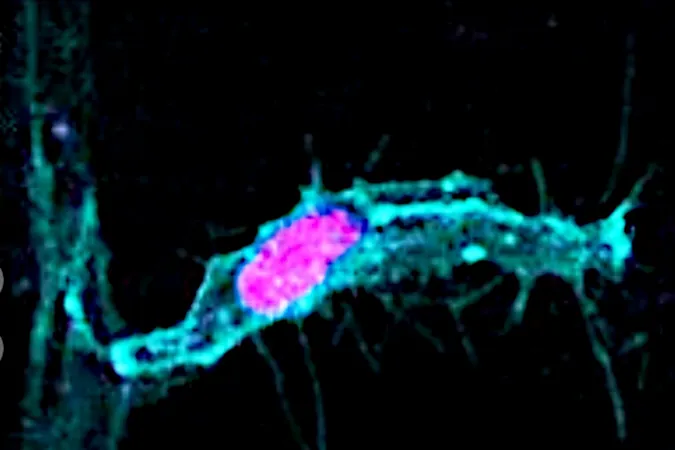
Did Your High School Biology Teach You Wrong About Cell Division?
2025-05-04
Author: Ken Lee
A Major Shift in Understanding Cell Division
If you thought you had the basics of cell division down after high school biology, think again! The longstanding narrative of mitosis—where a parent cell rounds into a perfect sphere before dividing into two identical daughter cells—is facing a serious challenge from new groundbreaking research.
The Surprising Findings
A recent study, published in *Science*, reveals that cell division isn’t as straightforward as textbooks have led us to believe. Researchers discovered that mitosis can occur without the parent cell becoming spherical, resulting in daughter cells that are not only asymmetrical but also functionally different. This insight has profound implications for our understanding of cell behavior, particularly in the context of diseases like cancer.
Shane Herbert, a co-lead author from the University of Manchester, emphasizes that this study challenges the traditional teaching: ‘Students learn a simplified model where cells divide into uniform shapes. Our study shows it’s much more complex in living organisms.’
An Eye-Opening Experiment with Zebrafish
Researchers closely examined blood vessel formation in zebrafish embryos, observing how one fast-moving lead cell orchestrates the division of surrounding slow-moving cells. Surprisingly, during mitosis, this lead cell didn’t round up, leading to an asymmetrical division that generated one slow-moving and one fast-moving cell.
Holly Lovegrove, another co-lead author, points out the unique advantage of using transparent zebrafish embryos to visualize dynamic cell behaviors in action, offering insights into how tissues grow.
Cell Shape Matters!
The scientists also discovered that the initial shape of the parent cell plays a pivotal role in whether its division is symmetrical or asymmetrical. Shorter, wider cells were more likely to round up and create identical daughters, while longer, thinner cells didn’t—and instead divided asymmetrically.
Georgia Hulmes, a co-first author, elaborates on their innovative approach using micropatterning, which allows them to manipulate cell shapes and observe the outcomes on cell division. This technique is paving the way for deeper insights into cellular behavior.
Revolutionary Implications
The implications of this research are far-reaching. By controlling the shape of parent cells, scientists could potentially engineer cells with specific functions, revolutionizing approaches in tissue engineering and regenerative medicine. Furthermore, understanding asymmetric divisions could shed light on cancer progression, where abnormal cell behavior often leads to clinical challenges.
As these revelations unfold, educators might need to brace themselves for the wave of updated textbooks—because the foundations of cellular biology as we know them could be on the verge of a major overhaul!




 Brasil (PT)
Brasil (PT)
 Canada (EN)
Canada (EN)
 Chile (ES)
Chile (ES)
 Česko (CS)
Česko (CS)
 대한민국 (KO)
대한민국 (KO)
 España (ES)
España (ES)
 France (FR)
France (FR)
 Hong Kong (EN)
Hong Kong (EN)
 Italia (IT)
Italia (IT)
 日本 (JA)
日本 (JA)
 Magyarország (HU)
Magyarország (HU)
 Norge (NO)
Norge (NO)
 Polska (PL)
Polska (PL)
 Schweiz (DE)
Schweiz (DE)
 Singapore (EN)
Singapore (EN)
 Sverige (SV)
Sverige (SV)
 Suomi (FI)
Suomi (FI)
 Türkiye (TR)
Türkiye (TR)
 الإمارات العربية المتحدة (AR)
الإمارات العربية المتحدة (AR)